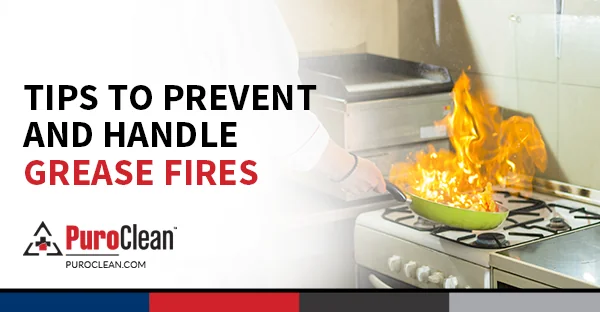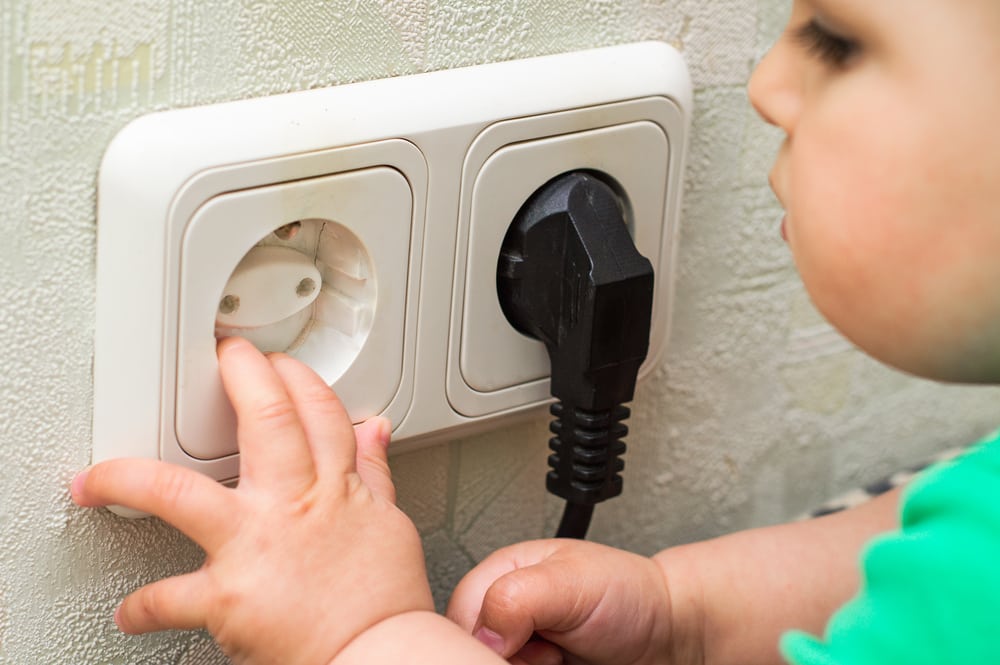 Grease fires most often occur when a pan is left on the fire for too long. Another way grease fires occur is when excess grease on the drip pan or stovetop accidentally catches fire. A small mistake can lead to the need for fire damage repair services soon after the fire. Preventing grease fires is easy as long as you stay in the kitchen while cooking and take a few simple safety measures. Here’s a look at how to prevent and handle grease fires in your kitchen:
Grease fires most often occur when a pan is left on the fire for too long. Another way grease fires occur is when excess grease on the drip pan or stovetop accidentally catches fire. A small mistake can lead to the need for fire damage repair services soon after the fire. Preventing grease fires is easy as long as you stay in the kitchen while cooking and take a few simple safety measures. Here’s a look at how to prevent and handle grease fires in your kitchen:
- When heating oil for deep-fat frying or pan-frying, stay in the kitchen at all times. Unattended cooking is the number one reason for kitchen fires.
- Before turning the heat on, ensure the burner or stovetop is cool. Also, clean any excess grease or oil spills from the drip pan and around the burner.
- Check the heat ratings of cooking oil. The ratings indicate the maximum temperature the oil can be cooked at before catching fire. The smoking point of most vegetable oils is around 450°F and of animal oils, around 375°F. Clip a thermometer to the side of the pot to gauge the temperature of the oil.
- When cooking oil is close to burning point, it will emit smoke and will ruin the taste of your food. If this happens, turn off the heat, carefully remove the pan from the burner and allow the pan to cool off.
- Don’t heat grease before dropping food into it. Otherwise, hot grease might splash out onto nearby objects, creating a fire hazard and causing injuries.
- Be extra cautious when putting food into hot oil. Use long utensils that allow you to gently put food into hot grease without dropping it and causing splashes.
- Use a lid or cover to prevent hot oil from splattering. If you need to stir the food, remove the lid carefully and put it back when you finish stirring.
- Clean oil and food spills immediately after they occur. First, turn off the stove and remove the food from the heat source. Then, wait for the stove to cool off and carefully wipe off the oil spills.
- If grease catches fire, don’t try to move the pan or pot. Put a metal lid on top of the pan to shut off the oxygen supply to the fire.
- A small fire that is contained within a pan can be extinguished by pouring baking soda on the fire until it outs. If you don’t feel safe controlling the fire yourself, immediately exit the house and call 911 for emergency help.
- Use a Class K fire extinguisher to put out grease flames that are out of control.
- Lastly, NEVER use water to put out a grease fire! Pouring water may cause grease to splash and spreads the fire. Never move the pan or run while holding it either. You’ll risk splashing grease onto yourself and around the house.
Learn more tips to prevent stovetop and oven fires here. You can find more general kitchen fire safety guidelines in this article. For professional fire damage repair services, contact your local PuroClean office.



